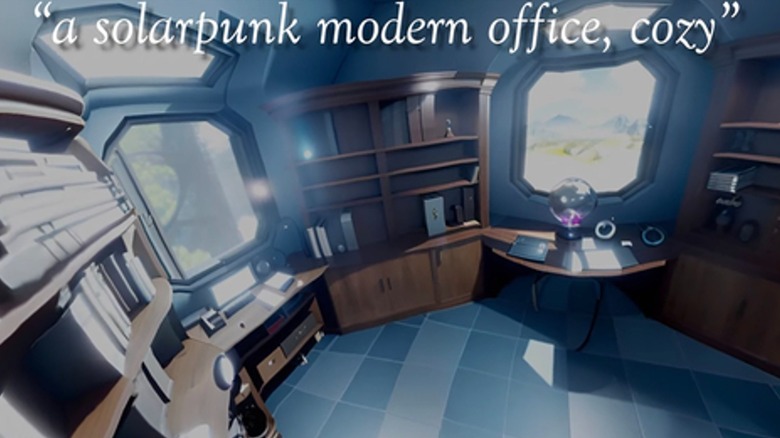Intel Labs' AI Diffusion Model Turns Your Text Prompts Into 360-Degree Images
Intel announced on June 21, 2023 that it had partnered with Blockade Labs to create a brand new AI diffusion model that's adept at producing unique image outputs that are entirely new within the space. According to Intel Labs' press release, the Latent Diffusion Model for 3D (LDM3D) is "the industry's first model to generate a depth map using the diffusion process to create 3D images with 360-degree views that are vivid and immersive."
This is certainly a massive improvement over existing 3D image building processes that typically focus on transforming 2D frames into the three dimensional target output.
The AI model was trained on an Intel AI supercomputer and a dataset utilizing over 400 million image-caption pairs across 10,000 samples of the LAION-400M database. This toolset was purpose built for research and model training, and appears to have resulted in a highly accurate and first of its kind 3D image generator. What's more, the tool allows users to generate images and their corresponding depth maps from the same text prompt, allowing for more advanced usage of the resulting outputs.
Depth mapping could have many applications
The press release notes a wide range of potentially valuable uses for this new product. The ability to generate 3D images from a standard text prompt could be an invaluable tool in the game design realm. This might be the most obvious application, but it's also a useful capability for homeowners looking to design a new room from the ground up, or a store owner seeking to revitalize the aesthetics of their business and is looking for inspiration.
Depth mapping may also be a crucial addition to product design and urban planning, as it allows users to visually traverse a rich AI-generated environment rather than a simple, flat rendering. This new utility could also find its way into training tools of all sorts.
The ability to build out AI-assisted worlds with 360-degree imagery could become a fast track to immersive simulation opportunities that look and feel more realistic than human programmed ones, for one thing. Training in a range of fields from medical professions to military exercises could become commonplace with the help of this new and exciting toolset as it improves and grows.

